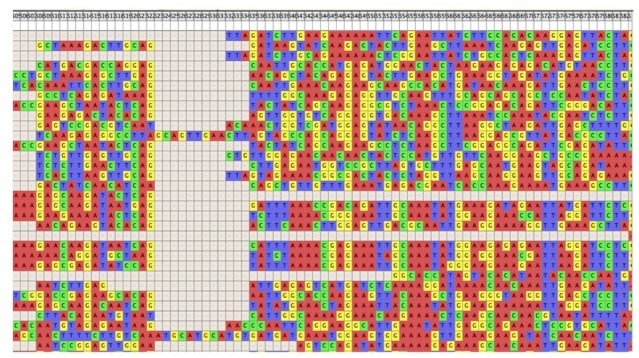Making a Next Generation Sequencing (NGS) library can seem a bit daunting to the new user, as failures can be expensive. But don’t be put off, as NGS library preparation is relatively simple molecular biology, and can be very easy if you choose to use a commercial kit from one of the many suppliers.
Take some time to think about what is important to your project; for example if you are wanting RNA-seq data do you only need to get differential gene expression? Will you need to look at splicing or miRNA? These factors make a big impact on the type of library you need to make, and the sequencing you’ll need to request. I’ve included some handy hints in this article to get you going on your way to preparing an awesome NGS library.
1. Start as you mean to go on
You are much more likely to get high-quality sequencing results from high-quality libraries and to do this ideally you’ll use high-quality nucleic acids. The samples you are working with should be well quantified using fluorimetric methods rather than spectrophotometry. Pico- and Ribo-green give excellent results when run in triplicate with a good standard curve and sensible and context-specific controls. Don’t skimp at the start, an extra day in the lab might be the difference between repeating your experiment and not.
2. Design your experiment
Spend some time considering what the primary question is of your experiment, if you have more than two primary questions then you need to consider breaking your experiment into smaller bitesize chunks. Use at least three replicates in any counting applications, e.g. RNA-seq and ChIP-seq.
3. Take Care with Your SPRI (or Similar) Beads
Dispense your beads into single use aliquots for storage at 4oC, let them get to room temperature then vortex them well immediately before use. Always use freshly prepared ethanol for bead washes, don’t overdry beads till they ‘crack’ and try to avoid carryover into subsequent reactions. Mix beads well by pipetting or ideally using a plate vortex.
4. Keep Things Clean, Especially for RNA-seq
Spend a little extra on RNase free and non-stick tubes, they won’t make a bad library good but why risk a cheap tube leading to a less robust prep? RNaseZap your bench and pipettes before starting and wear gloves. Always buy small aliquots of RNase free water and don’t lend it to anyone else.
5. Use Good Pipetting Technique
Consider using a repeat pipette for mastermix addition to 96 well plates. Calibrate your pipettes, as small difference in volumes used can lead to big changes in cluster density. Pipette the maximum volume you can work with in your protocol.
6. Always make a mastermix where possible
“Measure twice, cut once” as my dad used to say – calculate your mastermixes carefully and if you don’t have as much left-over as you expected try to work out why.
7. Keep good records
Write down lot numbers of enzymes or kits, keep your notes brief if you are following a kit protocol and simply record where you deviated, but don’t forget to link to a permenant online copy if you can.
8. Size-selection
Many protocols use bead-based size selection but if you are using gels then use gel cutting tips to avoid cross-contamination, take multiple gel slices just in case something goes wrong downstream and use a Dark Reader to prevent UV damage of your library. Alternatively consider an eGel, LabChip XT or Pippin Prep.
9. QC and QT your sequencing libraries
Use KAPA qPCR to quantify your NGS libraries, and make sure you’ve chosen the right BioAnalyser chip to get good size estimation. Normalise and pool your libraries ready for sequencing.
10. Generate some sequence data
Make sure you’ve given your sequencing lab any custom primers needed to complete your run.
Ultimately the best QC of an NGS library is some sequencing so submit it to your provider and look forward to your results. Once you’re confident you can start to submit larger numbers of libraries for multiple lanes or even complete flowcells of data. Now think about what you are going to do with 4 billion reads!





